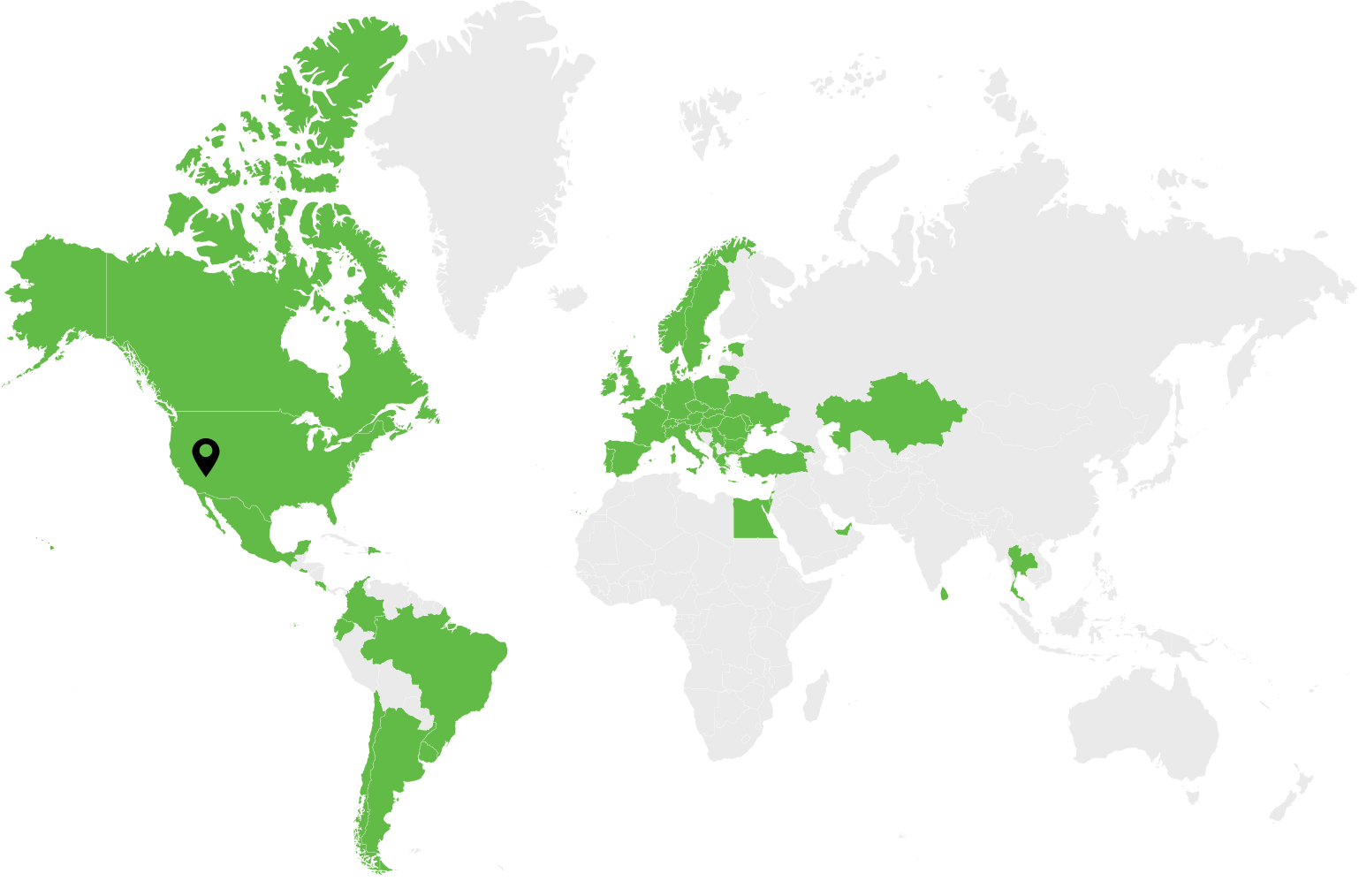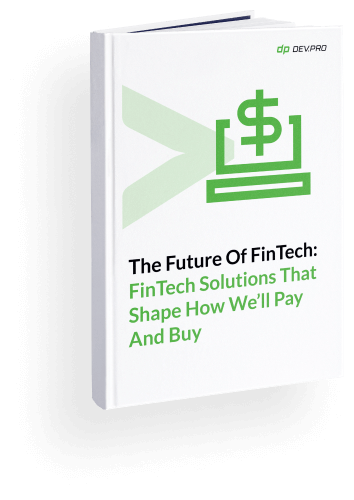According to a survey from Gartner, 47% of companies using IoT plan to prioritize and increase this kind of IT spending, while 17% plan to sustain the current levels of spending.
IoT in restaurants is capable of boosting your bottom line by slashing utility bills, reducing waste, increasing staff productivity, and decreasing working hours, as well as nurturing customer loyalty.
In the highly competitive but low-margin business like restaurants, an opportunity to lower costs is always welcomed.
Let’s check out some of the real-life cases of how the Internet of Things is employed to make restaurants a safer, more comfortable environment for guests and workers, and a better money-making machine for stakeholders.
Can IoT Make Restaurants More Efficient?
IoT devices perform a number of functions in the food service industry, from the primitive mission of logging certain physical parameters, including temperature, vibrations, and lighting, to being a part of the predictive maintenance algorithms.
In this capacity they get combined with big data and AI to help predict instances of breakage and prevent massive financial losses.
One such example is shared by Johan Nilssen, Vice President of TetraPak Services, where their IoT devices monitor equipment vibrations for predictive maintenance purposes. As a global player, they ship their packaging assembly lines to Argentina, where it can take up to 96 hours to clear customs. By predicting breakage of equipment using vibration monitoring with IoT sensors, TetraPak is able to ship parts in advance and save hundreds of thousands of tons of milk from going spoilt for over a week.
Peter Cryan of Inspire Brands, who own Baskin-Robbins, Arby’s, and more, says the company uses IoT on their dishwashers. This led them to discover that one unit was performing twice the number of washing cycles a day as the others: 90 vs 45 cycles as average. It turned out that every time a fork would fall on the floor, it got into a dishwasher for a full cycle, wasting tons of water, detergent, and electricity.
FoodTech integrates Internet of Things into both downstream and upstream segments. In this piece, we will focus on the multiple uses of IOT devices for restaurants .
Benefits Of Using IoT For Restaurants
Connected kitchens are a new norm for many big players in the food service industry. Let’s explore some of the uses of IoT in restaurants and cafes in the realm of hospitality software development.
Order from the Table
There are a few ways an IoT can be used so that customers can order food, call a waiter to the table: a QR code can be used to identify the table and lead a customer to a website or an application with respective choices.
Alternatively, a device with a few buttons can be placed on the table so that visitors can press certain buttons to call for a waiter or request a bill.
Pay from the Table
Ready to Pay is one of several solutions that allow you to check out a menu, order food, pay for it, reward a server with a tip, and leave a review by scanning a QR code.
Moreover, the solution helps restaurants turn tables 34 minutes faster, drive tips by 40% and increase average check by 15%.
ReadyToPay allows to order, pay, tip, and fill out a survey by scanning a QR code
Food Waste Management: Integral Part of Connected Kitchens
Food waste management sounds like a formal insignificant routine until you learn that over 30% of all food grown on the planet is wasted. On the other hand, the human population and its appetite is growing with FAO forecasting the need to feed 10 billion people by 2050 as compared to 7.5 billion in 2022. Moreover, the majority of arable land is already being cultivated and this method of increasing agricultural production has been virtually exhausted by now.
These three facts make waste management one of the most practical and least expensive ways [financially and environmentally] to bridge this widening gap.
Winnow is a leading waste management software solution. It uses smart IoT scales paired with AI and a specially developed software application to weight, control, analyze and reduce food waste in kitchens. They cooperate with global hospitality behemoths like Hilton, Accor, and Marriott.
To illustrate the scale of potential savings, Restaurant Associates saved 15 tons of food waste, cutting it in half in 11 pilot sites, avoiding 50 tons of CO2 annually.
Boosting Average Check
Gamification is one of the big trends of restaurant tech trends in 2022 and IoT devices are capable of boosting loyalty and driving brand recognition, as well as increasing the average check.
Kodisoft offers a number of IoT devices for the restaurant industry, including an interactive table that works as a gaming board, menu, order and payment placement tool. They managed to drive average check by 32% as a result of integrating this IoT technology into the ordering process.
Loss Prevention in Restaurants
Monnit offers a number of IoT devices for commercial fridges, including motion detection sensors and open / close monitoring ones. They can help management monitor when the fridge door is open or closed and if there is motion in the fridge via restricted-access dashboard, reinforcing loss prevention.
Other IoT applications produced for commercial fridges include temperature monitoring, water detection, AC current measuring, and vibration monitoring.
Training Team to Drive Food Quality and Consistency
Another idea that is IoT-based and designed to help back of house restaurant staff learn faster and produce high-quality products is Panasonic’s Kronosys glasses.
The technology is being developed to help new chefs in the kitchen master recipes quicker and present them in a consistent manner time after time again. The gadget combines several technologies that include multilingual performance and voice recognition. In the era of staff shortages and quick change of culinary trends, such devices can help more efficient ways to develop a new menu, roll it out across a chain of outlets and control consistency of execution with time.
Complying with Food Safety Regulations
The U.S.’s Health and Safety regulations are extremely stringent, as public safety is an utmost priority, especially in the times of pandemic.
Keeping your fridges compliant with the health and public safety regulations is not only good for your reputation, but can also help prevent fines and restaurant closures.
Digital 6 labs helps food operators lower food safety liability by providing pre-configured self-contained waterproof air-gapped temperature sensors for industrial fridges.
IOT Devices in Restaurant Management: Lowering Utility Bills
Lowering utility bills was one of the main goals of Inspire when they started using IoT in restaurants.
Inspire, the fourth-largest restaurant company in the U.S., put this change into action by using a central HVAC monitoring and control system. Not only can Inspire’s staff monitor how the AC is being used, but they can also control it centrally, ensuring that factors like personal preference and team turnover do not affect the cost of air conditioning.
The company’s district outlier reports with electricity usage also help to discipline, coach, and raise accountability for this cost center.
Decreasing Workload for Teams in Connected Restaurants
Another example of how IoT benefits restaurants comes from Peter Cryan’s speech. Chefs must note the temperature of beef sheets 40-50 times a day to stay compliant. IoT devices freed up their hands so they can prioritize other less routine tasks.
Raising Food Quality
Cost saving occurs on multiple levels in restaurants that use IoT devices to monitor and report on the processes from warehouse to kitchens.
Tellit helped Restaurant Technologies [RT] improve their cooking oil management process across 25,000 food service locations. The IoT devices help elevate the filtering technology that has a direct impact on both: oil life and food quality. Further out, outlets get to know comparative statistics if they use too much of the cooking oil compared to other eateries and if they are in compliance with pertinent national regulations and internal standards.
Predictive Maintenance & Remote Controls
A number of IoT devices can help monitor kitchen equipment for breakages or signs of malfunctioning: Temperature sensors and water sensors will help recognize issues like leakage at an early stage.
Vibration sensors can also be used to diagnose issues and serve as tokens of natural wear-and-tear, that may prompt a timely purchasing of a worn out part and prevent a breakage altogether.
Remote control is another feature that saves thousands of dollars at a time.
Spotting Issues in Chain Restaurants with IoT Devices
In a chain operation, the success of one restaurant cannot be precisely replicated by other franchises, but the lessons learned from one outlet can be applied to others.
Having a comparative table of metrics and data for hundreds of units in a chain restaurant can help diagnose issues quickly, single them out, address them locally and then ensure they are not repeated chain-wide. This is similar tothe example from the first chapter about a dishwasher used for every fork that is accidentally dropped on the floor.
How Restaurants Can Implement the Internet of Things
With all of the above examples of how the Internet of Things helps restaurants prosper, save on utility bills, and drive customer engagement, many companies turn to the best practices of IoT integrations.
There are a few steps to be taken for an efficient IoT strategy implementation in F&B segment:
- Conduct preliminary assessments with a few IoT solution providers as well as system integration companies to understand their options in terms of ROI expected from specific equipment and its installation.
- Align your company goals, budget, and potential benefits with the offers and decide on the vendor for both: developers of devices and the system integrator. [Cloud service providers are also a critical part of this technical puzzle, so make sure you use a qualified cloud solution engineer to select the right services and negotiate your terms.]
- Assign a responsible person in your company, draft a roadmap with the chosen vendors and get to implementation as soon as approved by stakeholders.
It’s crucial to choose software integration vendors with a background in the restaurant industry and ample experience with cloud architecture, as IoT devices have their own limitations, like security vulnerabilities.
The Future of IoT for Restaurants
There’s no doubt that the future of the Internet of Things in the food service industry is bright, as bigger companies will use it as a competitive advantage sooner rather than later, making it a norm in the industry.
Many solutions, like fridge sensors, are far from expensive and offer a quick ROI. It’s not too far-fetched to assume that sooner rather than later IoTaaS will be as widespread as SaaS and IaaS are now. This means that one supplier could ensure a fully connected kitchen at a monthly subscription.
Until then, DevPro’s system integration experts will gladly extend our ample food and beverage experience to help you roll out an IoT strategy to drive your bottom line according to your company’s business goals. Schedule your one-on-one meeting with our veteran sales manager today.


